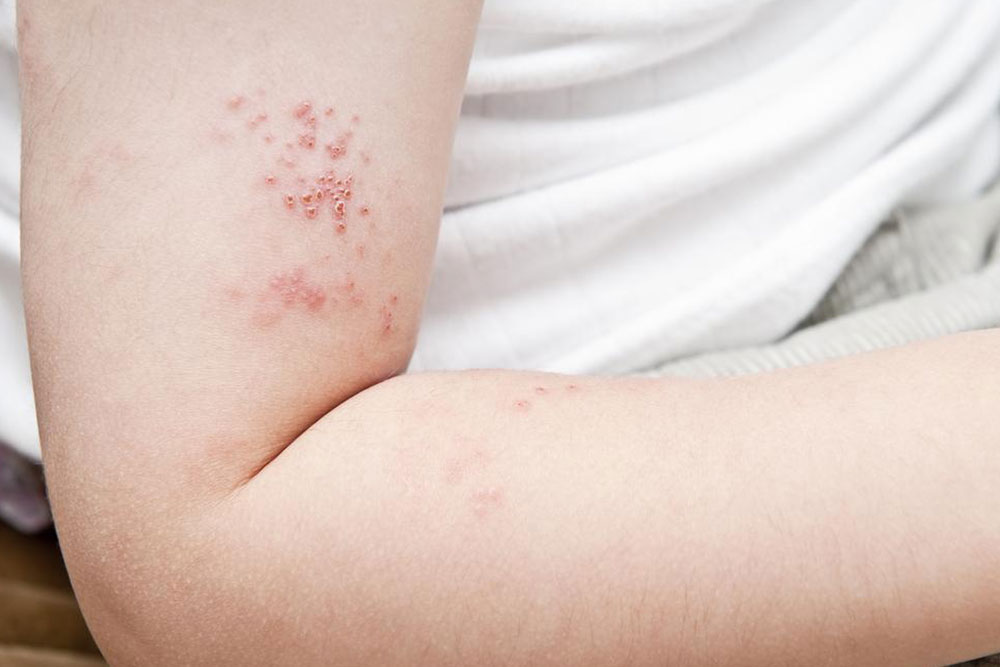Tips To Deal With Shingles Nerve Pain
Tips to deal with shingles nerve pain
Shingles are defined as a ‘reactivation of the chickenpox virus, the varicella-zoster.’ The virus travels down the nerve fibers to cause a painful skin rash. Shingles are common in older adults and in people who have weakened immune systems. Anyone who has previously had chickenpox is at the risk of getting shingles. After recovery, the virus will remain in the nervous system and lie dormant for years.

Most cases of Shingles last only for three to five weeks. Often characterized by the pain and rashes, the disease leaves behind nerve damage, which is yet another problem for patients. The rashes appear within the first five days.
The signs and symptoms of shingles vary between mild to severe pain, with the most common warning sign being a rash on one side of the body, often on the trunk, head, and neck or around the eye. The rash turns into painful, fluid-filled blisters which burst, dry out and form scabs where the blisters have been.
Intense pain is usually the first symptom of shingles. The following are the salient characteristics of nerve pain after shingles:
- Depending on which nerves are affected, shingles can cause inflammation of the brain, facial paralysis, or hearing or balance problems.
- Pain, burning, numbness or tingling and discomfort.
- Tender to touch.
- A red rash or rashes that begins a few days after the pain.
- Fluid-filled blisters that break and form again.
- Itching.
- Fever.
- A headache
- Sensitivity to light.
- Fatigue.
Treatment for shingles nerve pain
Here are some ways to treat shingles nerve pain:
Antiviral medications
These medicines may slow down the progress of the shingles rash, especially if taken within the first 72 hours of developing symptoms. Also, they reduce the viruses’ ability to replicate. These medications have some effect on the nerve pain from shingles. They are:
- Acyclovir (Zovirax)
- Famciclovir (Famvir)
- Valacyclovir (Valtrex)
Painkillers
Some people experience long-term shingles nerve pain called postherpetic neuralgia (PHN) which is a severe, unpleasant long-term shingles nerve pain. In this case, the person has been cured of shingles, but the nerve damage does not allow the patient to feel any relief. Almost 12% can feel it to 15% of the patients who suffer from shingles.
The shingles nerve pain is often described as burning, stabbing or throbbing. To lessen the chronic shingles nerve pain experienced by affected individuals, painkillers are taken. They are:
- Acetaminophen
- Ibuprofen
- Naproxen
Other medications
- Numbing medicine : It can come in a variety of forms, such as creams, lotions, patches, powders, and sprays. Example: Lidocaine (Lidoderm, Xylocaine)
- Corticosteroids : Often prescribed for those with moderate to severe shingles nerve pain. These are prescribed in addition to antiviral medications.
- Tricyclic antidepressants : They work by blocking pain receptors in the body such as amitriptyline, desipramine, and nortriptyline.
- Caladryl : This medication works by interfering with the pain signals which are sent by the nerves from the brain. This medication is available in gel, lotion, spray or stick form.
Home care
- Keep the affected area clean, dry and exposed to air as much as possible.
- Avoid scratching or bursting the blisters as they will open up and become susceptible to infection.
- Apply a mixture made of 3 teaspoons baking soda mixed with 1 teaspoon of water to reduce irritation. Its alkaline nature neutralizes the chemical that creates the itching sensation.
- Use a cold compress followed by benzocaine cream as this works as an anesthetic, numbing the nerve endings in the skin.
- Some people find that acupuncture and other complementary treatments help with the pain that can linger after shingles.
- Soak any infected sores in Burow’s solution which has antibacterial and astringent properties. This helps to decrease oozing, cleaning away any crusting and soothing the skin.
- After lesion has crusted over, apply capsaicin cream to promote healing.
- Apply a 5% lidocaine patch to your healed blister to reduce nerve pain.
Those who are of age sixty years or older are also recommended to take Zostavax, a shingles vaccine which is available since 2006. Though it will not completely prevent reactivation of the virus, it will cut the chance of developing shingles by about half of the original chances. Even if shingles still develops, the vaccine will make it relatively painless.
Although there is no such thing as an absolutely painless procedure during the treatment, with some simple steps, the quality of life for patients with shingles can be made better. Always remember to practice cleanliness and timely treatment that will allow you walk out of problems easily.




